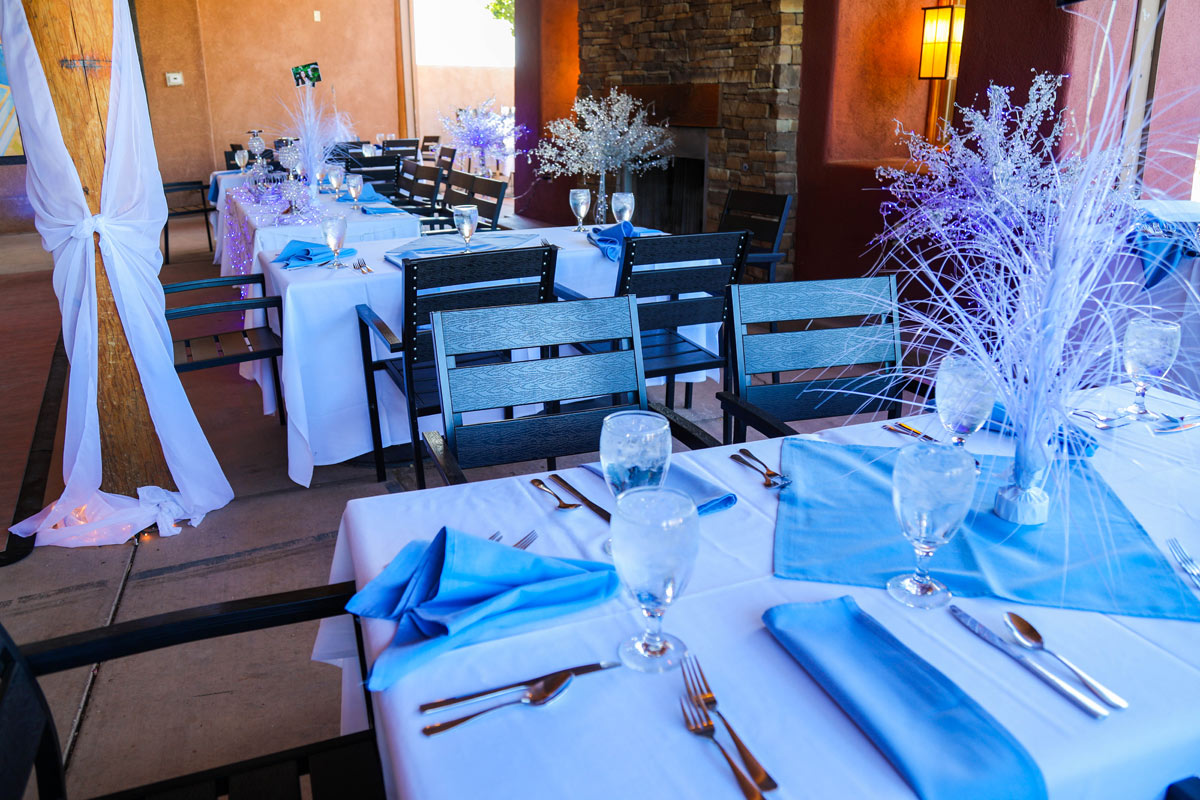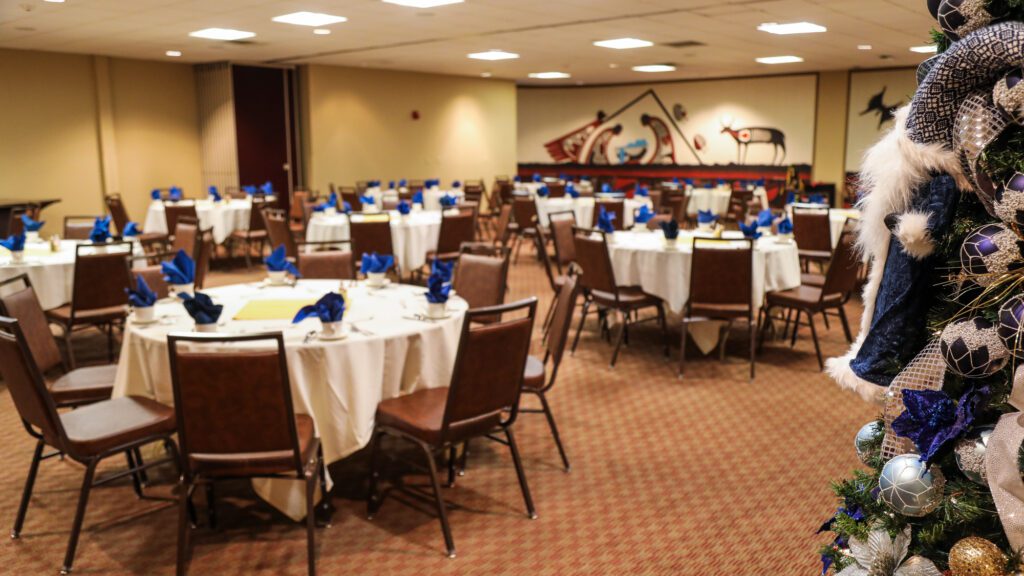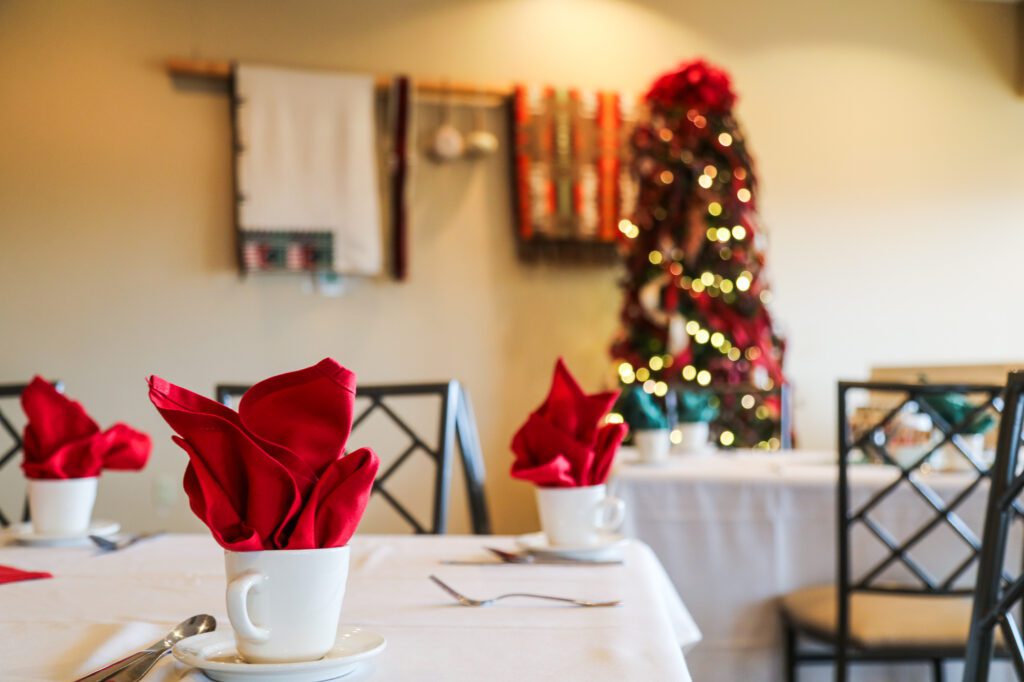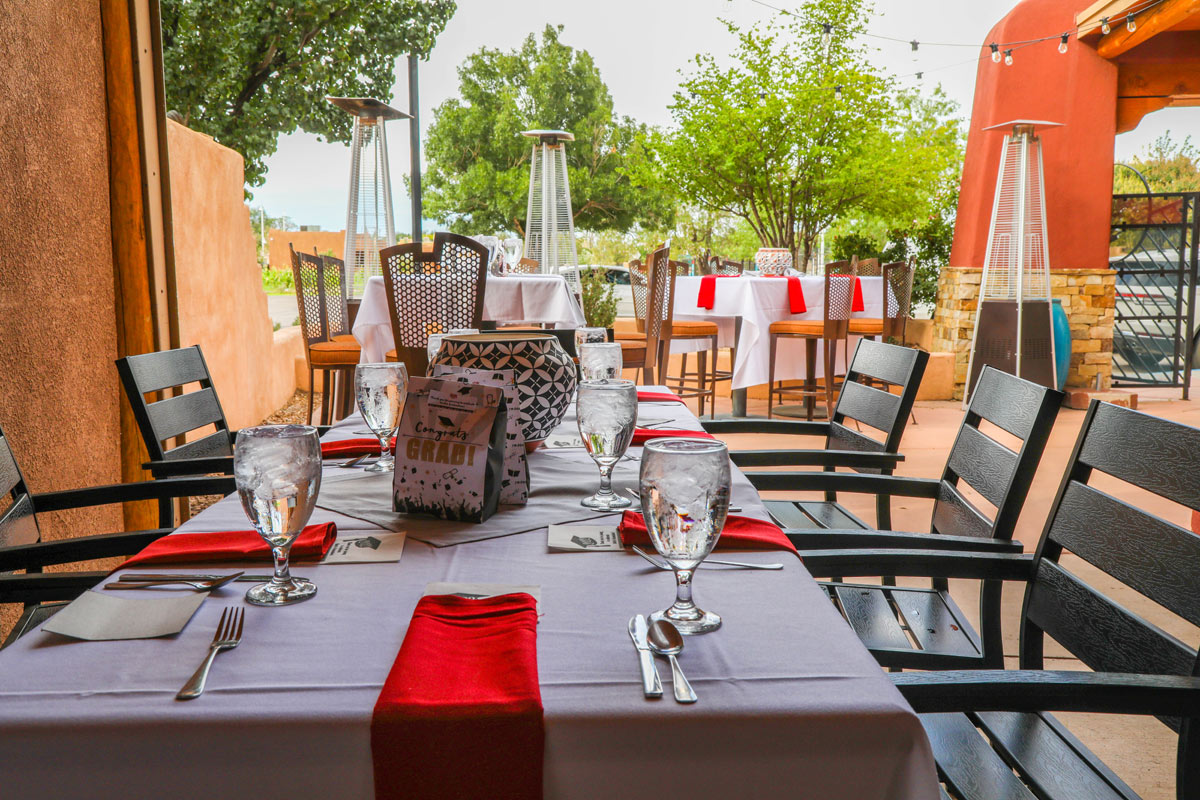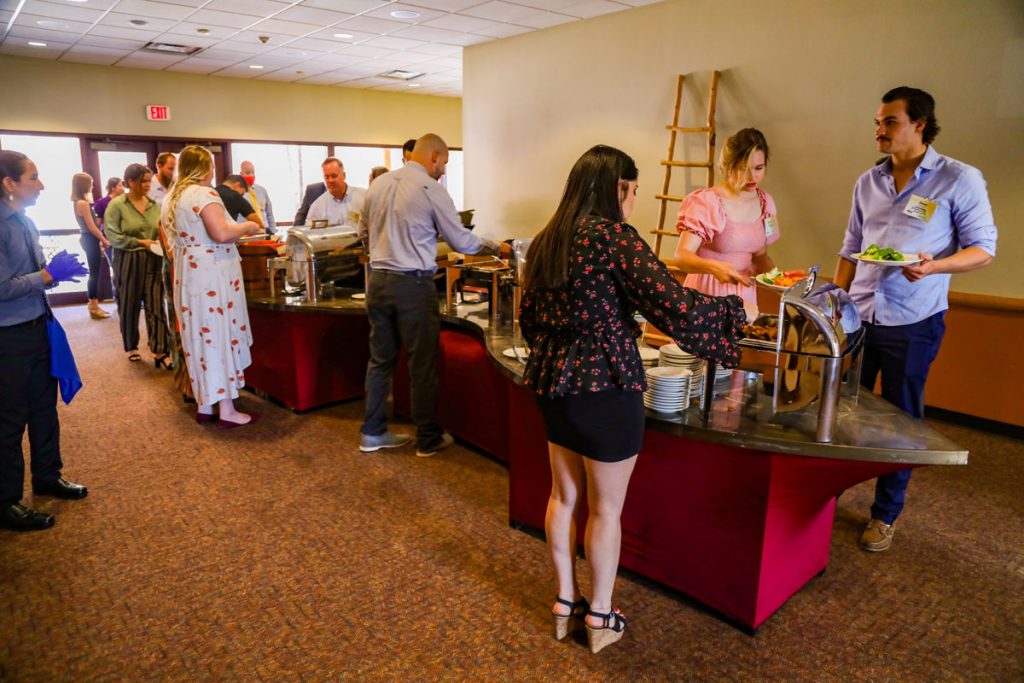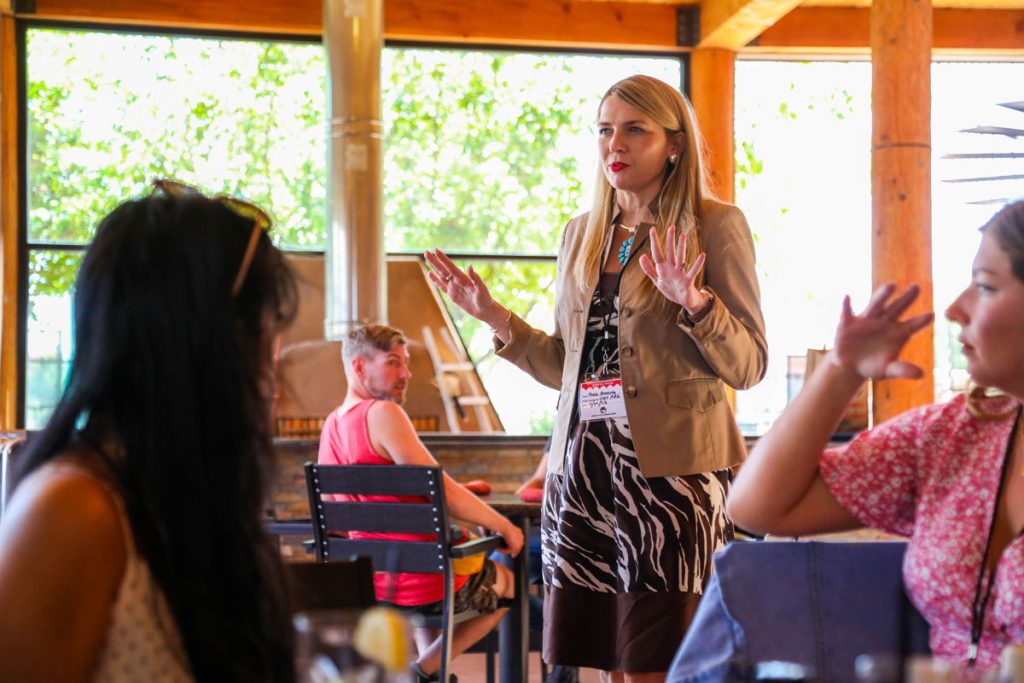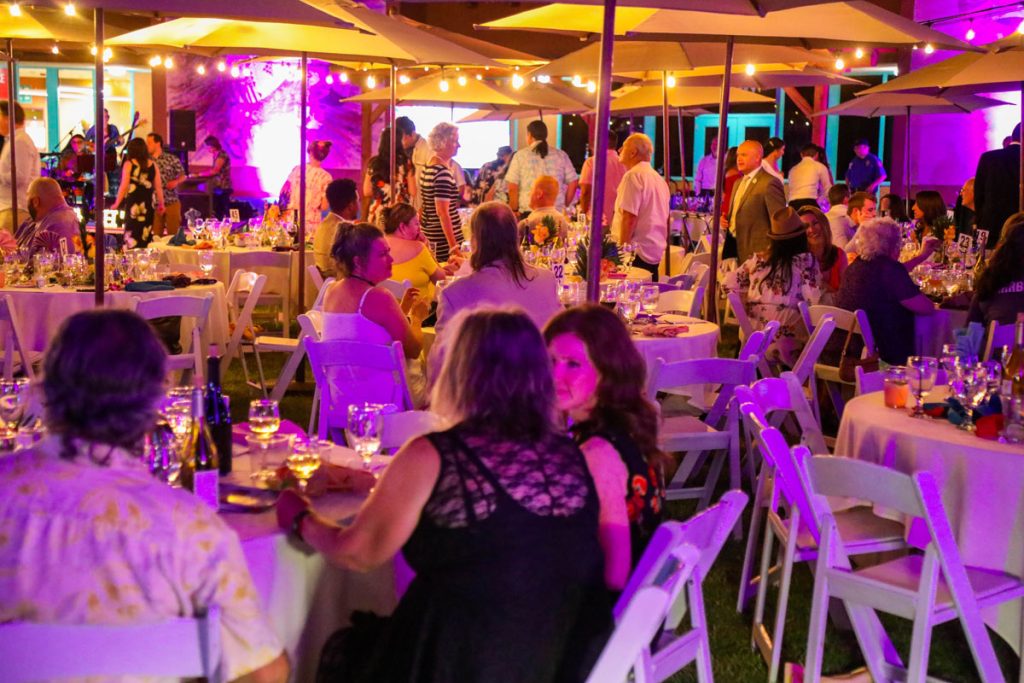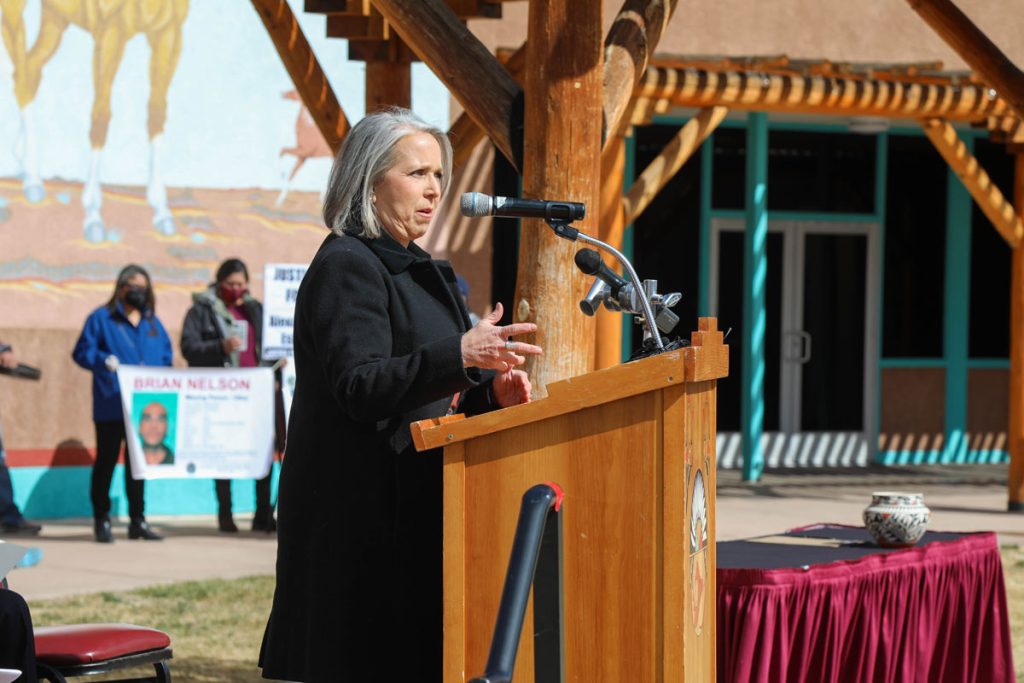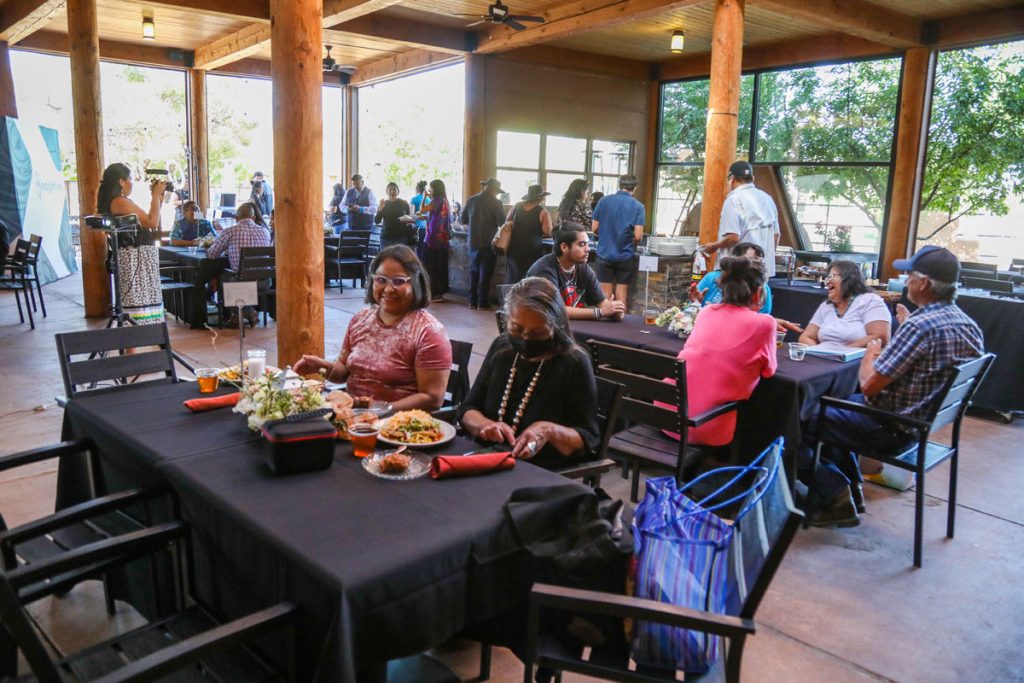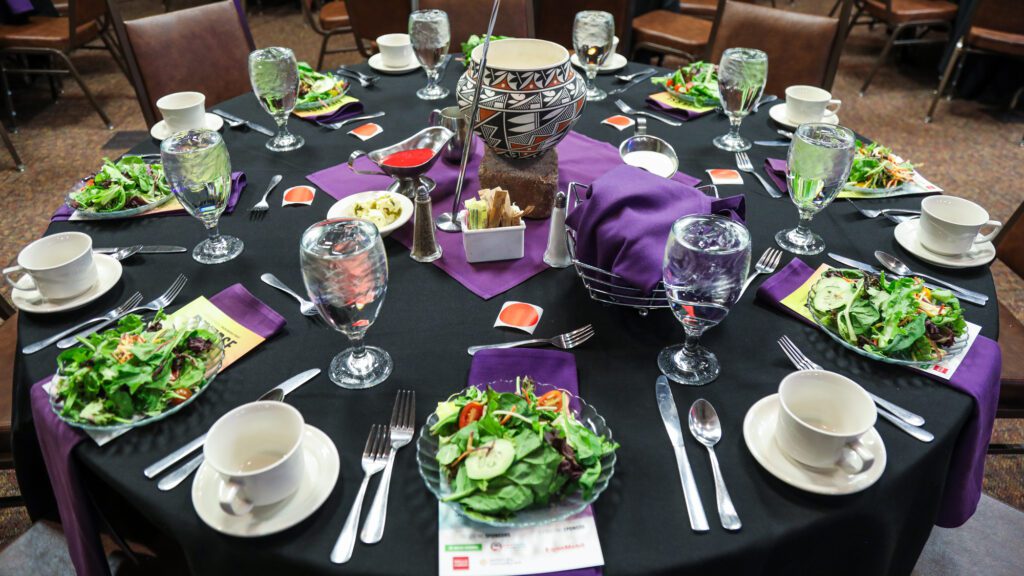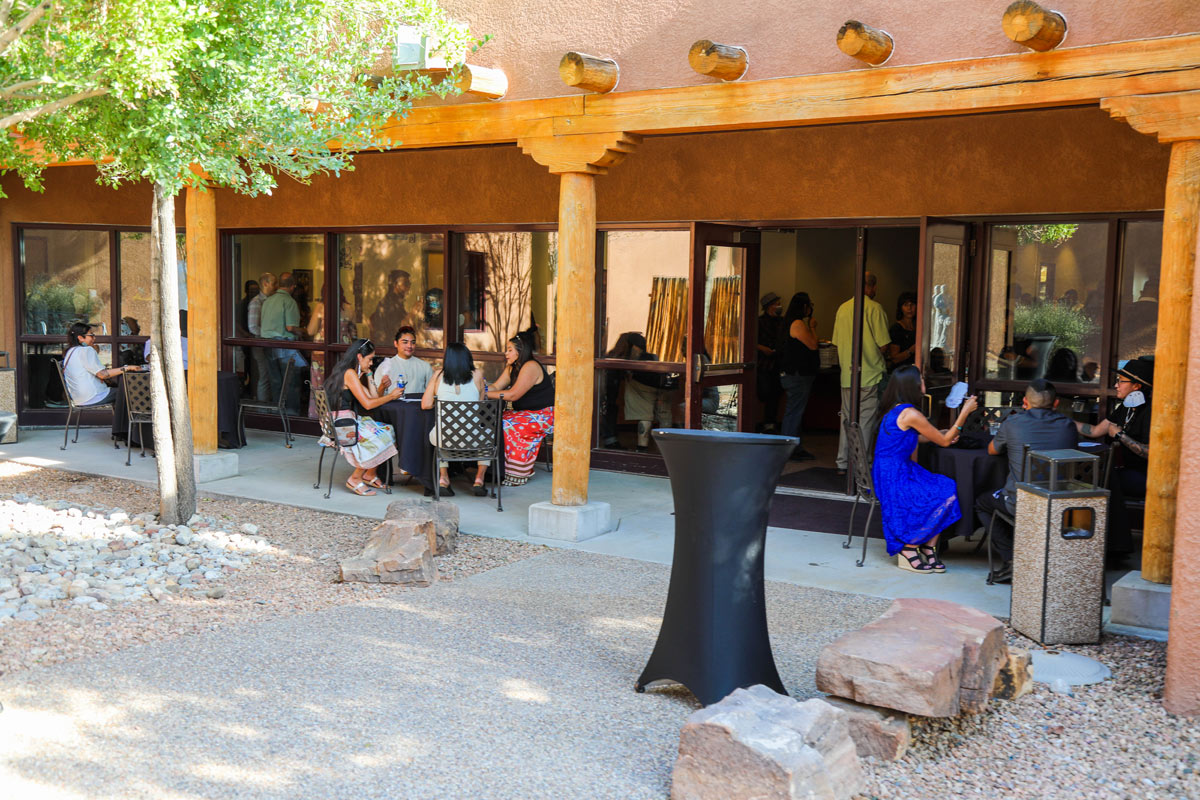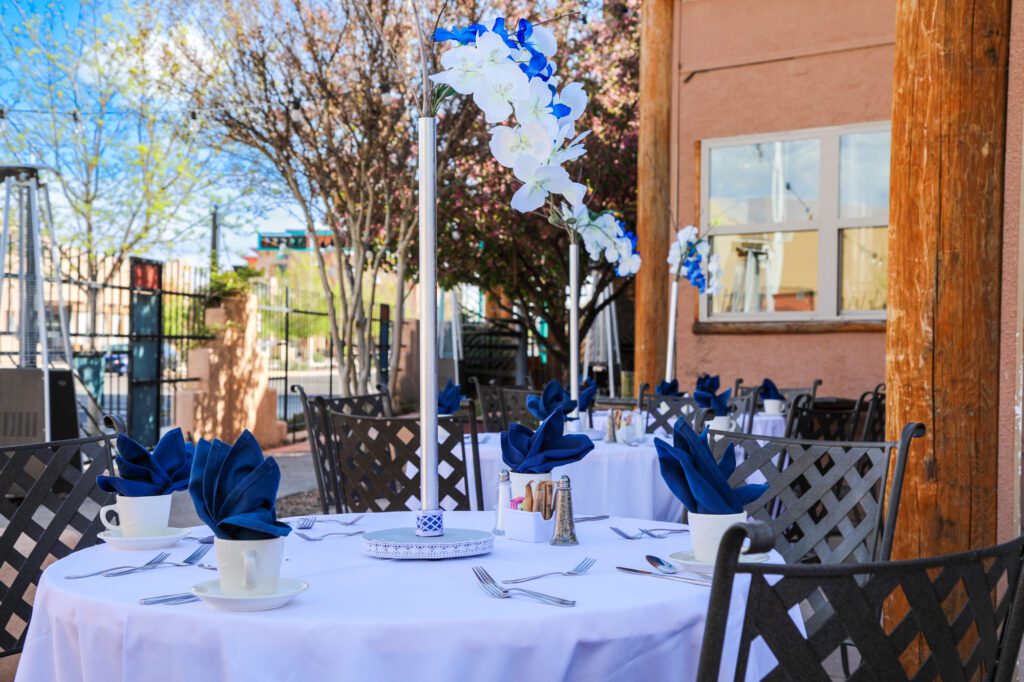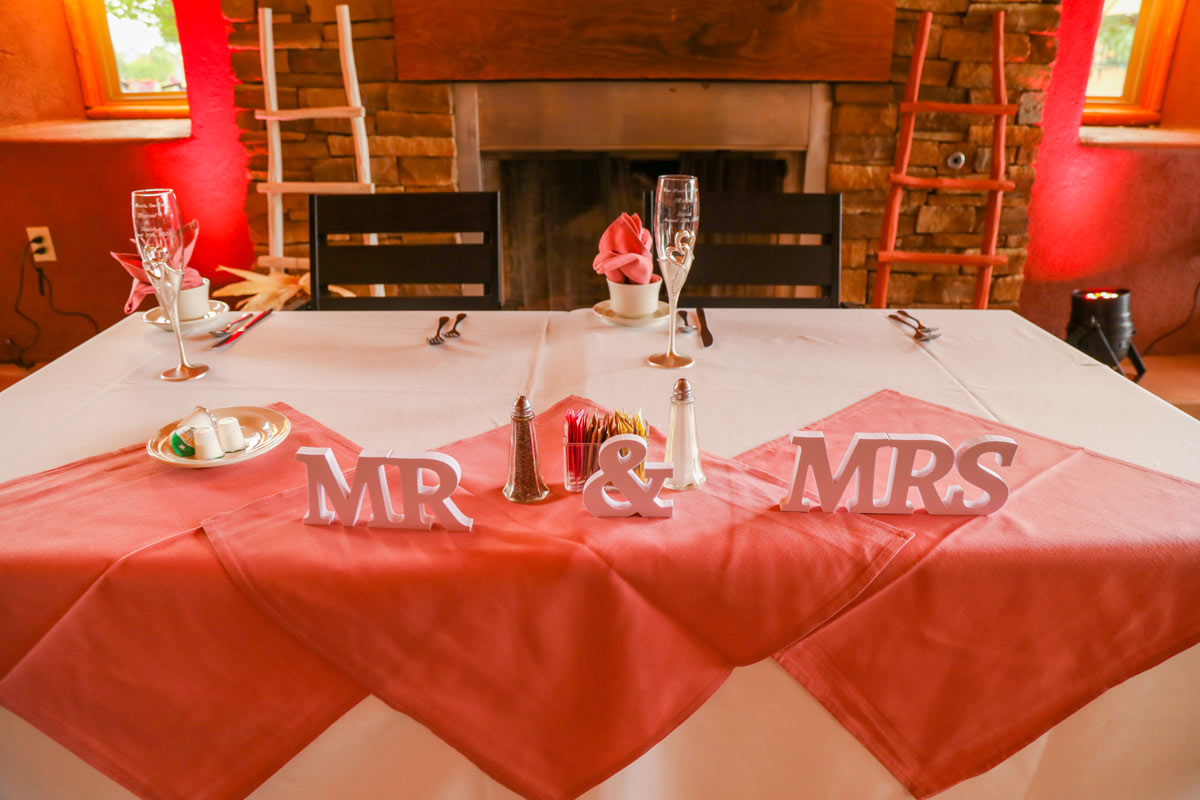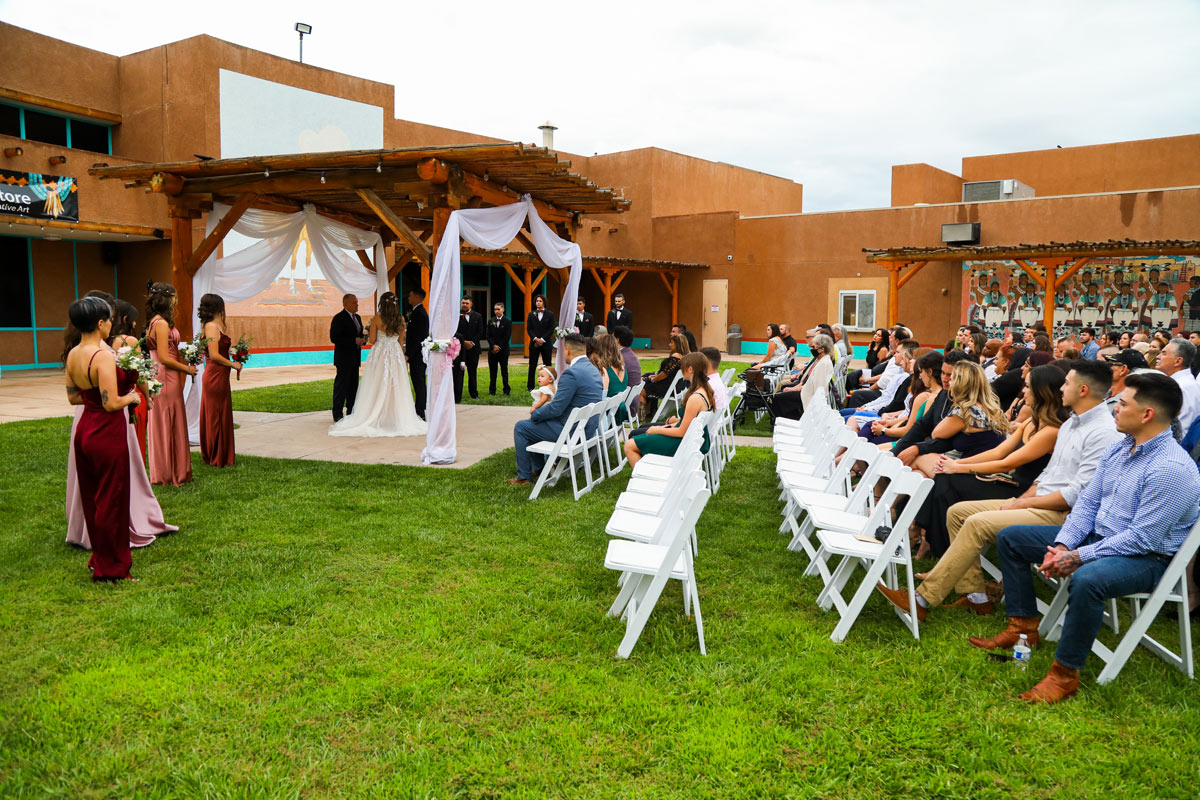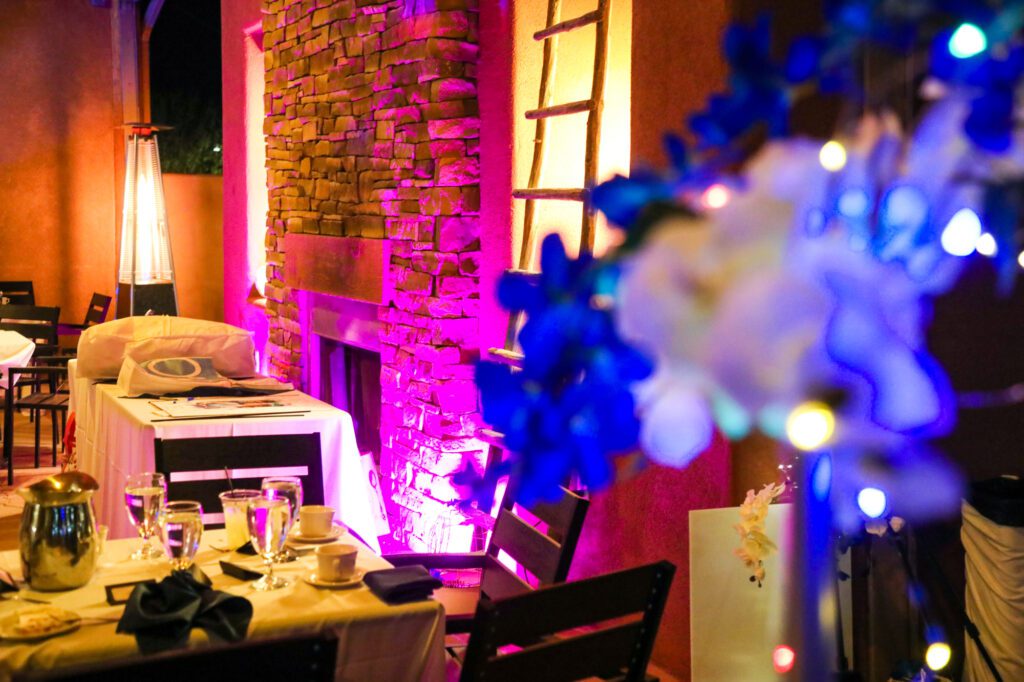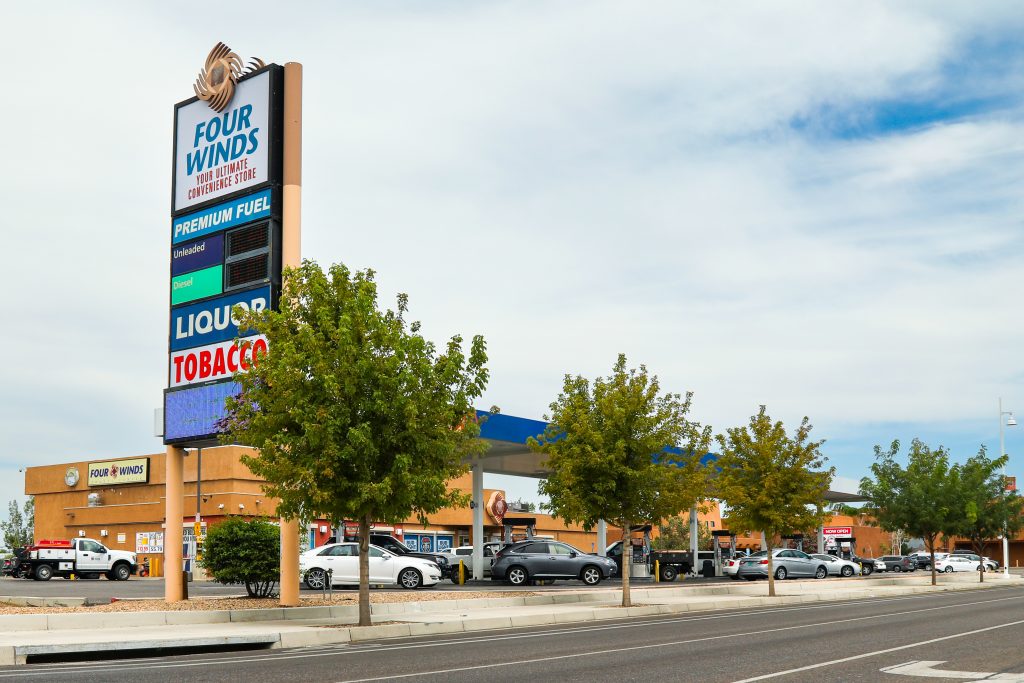Tradition, Clay, and the Open Road

From the wings of eagles to tires on the blacktop, Natalie Sandia’s pottery and family legacy have been all about the journey.
“Me and my dad, we used to travel all over most of the United States delivering pottery,” Natalie says, “and that was just so awesome. I got to meet a lot of people, and see the way he used to pack the pottery and everything. The road trips we took, it was just something else.”
Natalie is a full-time pottery artist, known for her genie vases, and prominent use of feather motifs on her finely crafted pottery to represent her Eagle Clan. She started making pottery after high school, around the age of 18. “I was pretty much taught by my mom, but it wasn’t her telling me how to do it,” she recalls. “She just told me, ‘Look at it closely, what do you think, how do you think it looks?’ and I would see that it was lopsided or something like that, and if didn’t look right, I had to rebuild it up again until it looked perfect.”
Descended from many generations of potters from Jemez and Acoma, it was a close tie to tradition that led her to join the family business with her parents, Wilbert and Geraldine Sandia.

“My parents had pretty much lived on pottery-making all their lives,” Natalie says. “Traveling with my dad all across most of the United States delivering pottery is how I learned to do my business, through retail and wholesale prices. So we were the ones traveling while my mom was home making pottery. He’s the one that taught me the business side, while my mom taught me with the clay.”
Although Wilbert has passed on, Natalie continued to make, sell, and deliver pottery, after a short hiatus. “It was hard when he passed away,” Natalie shares. “A few months later, we went to California. Coming back, we stopped at Scottsdale to sell pottery—I couldn’t do it. It was hard. I couldn’t do it, I couldn’t sell. I think I’ve gotten over that now, but that was something else that really hurt me in here. (Taps chest.) I had to say no to the next few stores.”
Those beloved trips with her dad are kept close to her heart, and Natalie eagerly talks about them.
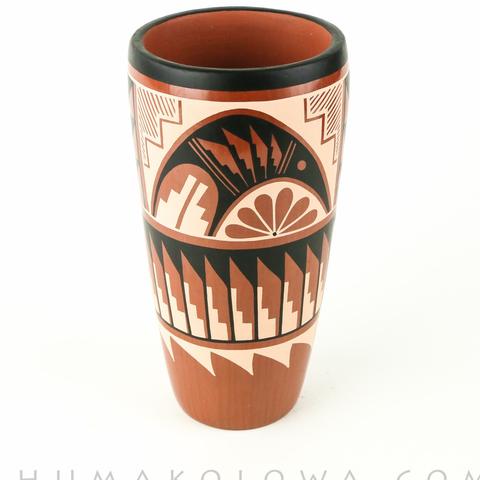
“The last trip he bought me was Wisconsin, the Schemitzun pow wow. My son was singing in the drum group, and my mom took some pottery. My dad took me to the travel place and goes, ‘Let me go in and pay,’ and he comes out and hands me a ticket, and that’s the last trip he bought me was Wisconsin to help my mom out. And then when I came home, he goes, ‘It’s a dream come true, huh?’ and I said, ‘Oh my god, yes it was.’”
Natalie’s thoughts frequently drifted to her dad while she was making the Pueblo Pottery Mug. “I think he’s so proud of me,” Natalie says, smiling warmly, “because he’s always wanted something like this, for someone in the family to be out there in the public, to be really known.”
When Natalie was approached to create the piece for the Pueblo Pottery Mug, it was a tight deadline of only two weeks, but she decided to go for it.
The first mug turned out too small. “I said, ‘Oh my god, it’s not right, and I only have two weeks to do this,” but got it just right on the third try. “It was short time. It was real stressful, but I did it, got it done, and I’m proud.”
Natalie says the shape of the mug influenced the design she created. “I wanted to put the daisy on there, but for some reason I thought it was not going to look right, so I did the traditional steps and feather designs,” she says. “It’s just something that comes to my mind, you know, what will look nice.”About being part of the Pueblo Pottery Mug series, Natalie says, “It’s just so special, starting from the mug to now, the whole process is wonderful. It’s amazing how it’s gonna be out there. It’s going to be so special to see people buying it, people owning one, and it’s just something else.”
The Indian Pueblo Store asked Natalie if there’s anything she wants the people buying the mug to know: “It was made with love. It was just so special doing this project.”
Additional background on the Pueblo Pottery Mugs:
In January 2015, five Pueblo potters, Erik Fender (San Ildefonso), Elizabeth Medina (Zia), Frederica Antonio (Acoma), Patricia Lowden (Acoma), and Robin Teller (Isleta), were commissioned by the Indian Pueblo Store to create traditional Pueblo pottery in the form of a contemporary coffee mug, which could be replicated.
The popularity of the mugs prompted the commission of a second series of Pueblo Pottery Mugs, this time with designs by Martha Romero (Nambé), Carlos Laate (Zuni), Denise Chavarria (Santa Clara), Helen Bird (Santo Domingo), and a collaboration from Lisa Holt (Cochiti) and Harlan Reano (Santo Domingo).
Series two debuted with Martha Romero’s design just before Christmas 2017, with the others being released at intervals through mid-February 2018. Series three debuted in October 2018 with mugs from Juanita Fragua (Jemez), Clarence Cruz (Ohkay Owingeh), Natalie Sandia (Jemez), Myron Sarracino (Laguna), and Hubert Candelario (San Felipe). The goal is to eventually have potters from each of New Mexico’s 19 Pueblos produce a mug design representing their pueblo.
The originals for series one through three are on display at the Indian Pueblo Store, located inside the Indian Pueblo Cultural Center. All of the participating artists receive royalties for each mug sold, with proceeds also supporting the Indian Pueblo Cultural Center and the 19 Pueblos of New Mexico.






